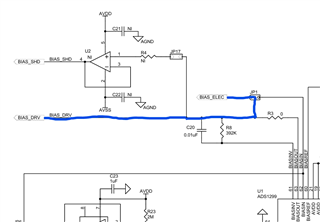Other Parts Discussed in Thread: ADS1299
Tool/software:
I am working on SPI communication between ADS1299 and nRF52840. I have an ADS1299EEGFE-DK board but I am not using the MMBO board. I established communication between ADS1299 and nRF52840 successfully. I can read and write in the register. When I try to gather signals from the ADS1299, I cannot get any signal. I am using dedicated bias and reference electrodes. I am using internal bias to drive. When I tap the electrodes, I can see the changes in the output, but when I connect the electrodes to the skin, there is no change. The register configuration I used and the hardware configurations are detailed below. Currently, I am working on one channel.
CONFIG1 -> 0xD6
CONFIG2 -> 0xC0
CONFIG3 -> 0xEC
CH1SET -> 0x60
MISC1 -> 0x20
JP2 -> 2-3 connected
JP20 -> 1-2 connected
JP24 -> 2-3 connected
JP25 -> 5th pin BIAS_ELEC
JP25 -> 6th pin REF_ELEC
JP25 -> 1-2 and 3-4 connected
JP1 -> 1-2 connected
JP6 -> 2-3 connected
JP7 -> 1-2 connected
JP8 -> 2-3 connected




